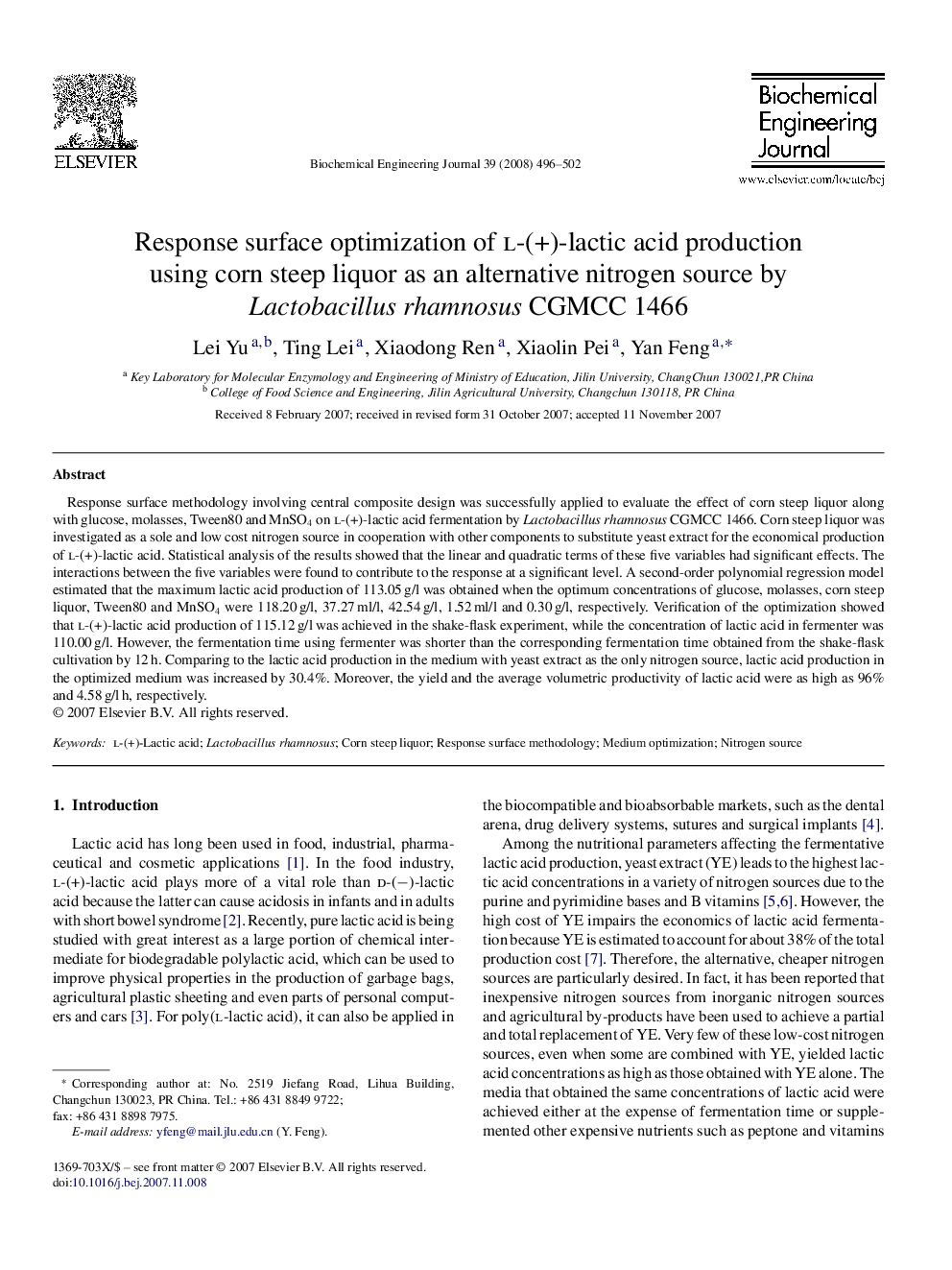| Article ID | Journal | Published Year | Pages | File Type |
|---|---|---|---|---|
| 4435 | Biochemical Engineering Journal | 2008 | 7 Pages |
Response surface methodology involving central composite design was successfully applied to evaluate the effect of corn steep liquor along with glucose, molasses, Tween80 and MnSO4 on l-(+)-lactic acid fermentation by Lactobacillus rhamnosus CGMCC 1466. Corn steep liquor was investigated as a sole and low cost nitrogen source in cooperation with other components to substitute yeast extract for the economical production of l-(+)-lactic acid. Statistical analysis of the results showed that the linear and quadratic terms of these five variables had significant effects. The interactions between the five variables were found to contribute to the response at a significant level. A second-order polynomial regression model estimated that the maximum lactic acid production of 113.05 g/l was obtained when the optimum concentrations of glucose, molasses, corn steep liquor, Tween80 and MnSO4 were 118.20 g/l, 37.27 ml/l, 42.54 g/l, 1.52 ml/l and 0.30 g/l, respectively. Verification of the optimization showed that l-(+)-lactic acid production of 115.12 g/l was achieved in the shake-flask experiment, while the concentration of lactic acid in fermenter was 110.00 g/l. However, the fermentation time using fermenter was shorter than the corresponding fermentation time obtained from the shake-flask cultivation by 12 h. Comparing to the lactic acid production in the medium with yeast extract as the only nitrogen source, lactic acid production in the optimized medium was increased by 30.4%. Moreover, the yield and the average volumetric productivity of lactic acid were as high as 96% and 4.58 g/l h, respectively.
